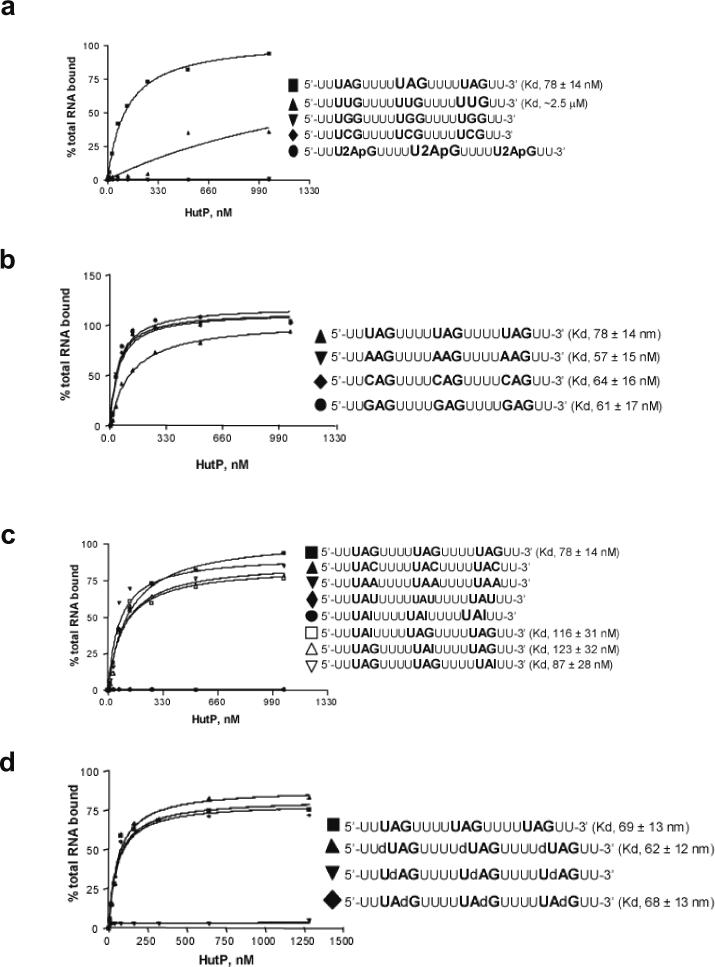Figure 4.

Effects of base substitutions and deoxy ribose substitutions at the UAG motif on HutP binding. (a) Effects of base substitutions at the UAG motif on HutP binding. RNAs containing substitutions (A or G or C) were prepared chemically, labeled at the 5′ end, and then used in the filter binding assay described in Figure 2. (b) Effects of base substitutions and the base analog at the second base of the UAG motif on HutP binding. RNAs containing substitutions (U or G or C), in addition to RNA containing the 2-amino purine analog, were prepared chemically, labeled at the 5′ end, and then used in the filter binding assay described in Figure 2. (c) Effects of base substitutions and the base analog at the third base of the UAG motif on HutP binding. RNAs containing substitutions (A or C or U), in addition to RNA containing ribo-inosine, were prepared chemically, labeled at the 5′ end, and then used in the filter binding assay described in Figure 2. To evaluate the positional importance for the UAG motifs' recognition, we prepared three RNAs containing inosine substitutions at the first, second and third UAG motif in the 21mer RAT. These RNAs were tested for HutP binding. (d) Effects of deoxy base substitutions at the UAG motif on HutP binding. To evaluate the 2′-OH group importance for the UAG motifs' recognition, three RNAs containing substitutions (dU or dA or dG), were prepared chemically, labeled at the 5′ end, and then used in the filter binding assay described in Figure 2.
